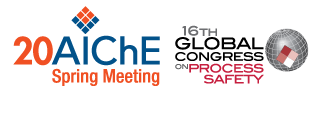

Pressure relief and safety instrumented systems are often the last line of defense before the occurrence of a catastrophic event. Their design, sizing, and reliability are hence of critical importance for the chemical process industries. Either are touted as capable of achieving a PFD = 0.01 or even 0.001. But, common weaknesses in implementation prevent this from being achieved. These include:
- Failing to take the PFD into account in the design of relief systems that require multiple relief valves to open to achieve the target capacity for the limiting case. Such systems should be designed as MooN instead of NooN. Examples from many facilities are shared, along with the PFD achieved.
- Failing to stagger maintenance for multiple channel systems. If maintenance or checks or calibrations are performed on the same day by the same person, then redundancy is lost as mistakes will be repeated.
- High error rate for control of block valves for relief valves or SIS taps and impulse lines
- Failure to account for the human error probability in the PFD estimates, resulting in expecting PFDs of 0.001 when only 0.01 is achievable long term
Cases studies, including data from UNITED (a SABIC affiliate) and SAUDI KAYAN (a SABIC affiliate) will be shared in this paper.
Presenter(s)
Once the content has been viewed and you have attested to it, you will be able to download and print a certificate for PDH credits.
If you have already viewed this content,
please click here
to login.
Language
Pricing
Individuals
| AIChE Member Credits | 0.5 |
| AIChE Pro Members | $19.00 |
| Employees of CCPS Member Companies | Free |
| AIChE Graduate Student Members | Free |
| AIChE Undergraduate Student Members | Free |
| AIChE Explorer Members | $29.00 |
| Non-Members | $29.00 |
